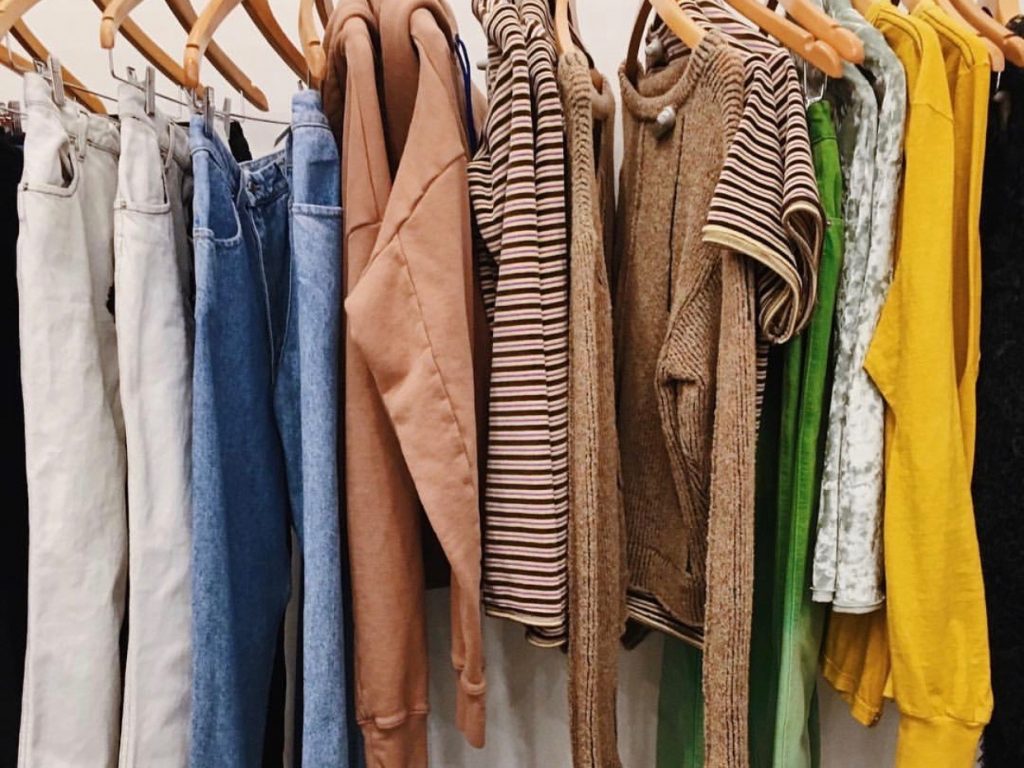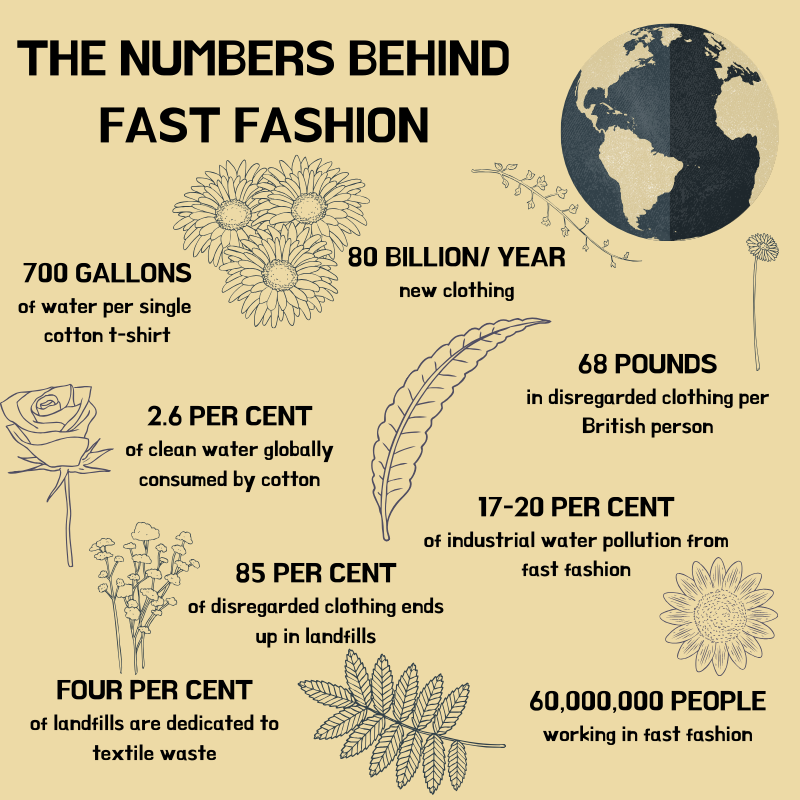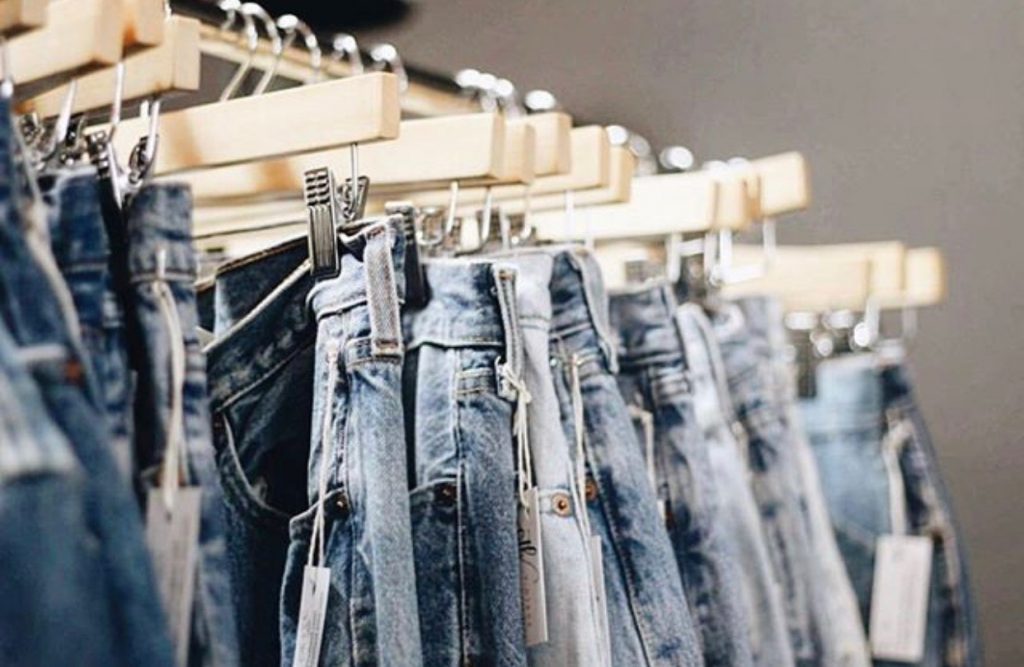The anti-fast fashion movement has now successfully filtered into the mainstream and “sustainability” is the buzzword on everyone’s lips.
Consumers are waking up to the harsh reality check that the fashion industry is the second most wasteful in the world, and influencers and big brands are responding with promises of ethically sourced clothing.
Nevertheless, the constant greenwashing of our consumption and round of applause towards giant producers becoming sustainable is blinding the average low impact consumer. No matter how you sew it, nothing new can be sustainable. And to a certain extent, even secondhand fashion doesn’t have the ability to fit the “sustainable” label we all believe it does.
“The premise of fashion is to be fashionable. Being fashionable means being on-trend. Being on-trend means only buying things when they’re deemed trendy by big influencers…. brands that promote sustainable fashion and trend following charity shops allow people to be environmentally aware while not sacrificing our desire to be fashion icons,” – Natoryia Rameriez , 32
 With a passionate audience following the sustainable fashion scene, big brands along our high streets are feeling the pressure to go green. Gucci announced that they will no longer be using fur in their products, Adidas is on the path to only using recycled plastics in all of their products by 2024, ASOS has vowed to no longer produce or sell clothing made from animal parts. Meanwhile, fabrics such as linen, which has a very low environmental impact, are coming back into trend.
With a passionate audience following the sustainable fashion scene, big brands along our high streets are feeling the pressure to go green. Gucci announced that they will no longer be using fur in their products, Adidas is on the path to only using recycled plastics in all of their products by 2024, ASOS has vowed to no longer produce or sell clothing made from animal parts. Meanwhile, fabrics such as linen, which has a very low environmental impact, are coming back into trend.
Despite all of these efforts, buying new is never the best option. The efforts of green, eco-friendly and ethical fashion influencers on Instagram such as Clare Press, Sarah Corbett, and Isabella Broden encourage people to buy sustainably and secondhand whilst never showing the flaws of the system.
Fashion made with a green thumb may be more eco-friendly in the sense of their impact on the planet and humans, but they still support not teaching the fact that our inability to find a limit to our personal consumption is still causing problems. Any company looking to be successful must convince people that they need something in order to buy it.  According to Gittemary Johansen, popular sustainability-based Danish Youtuber, the sustainable fashion movement as a whole is giving consumers the illusion of a higher state of consciousness. In a world where businesses need to operate and support a global economy in order to survive, Johansen believes that secondhand shopping is the closest solution we have to lowering your environmental and human impact.
According to Gittemary Johansen, popular sustainability-based Danish Youtuber, the sustainable fashion movement as a whole is giving consumers the illusion of a higher state of consciousness. In a world where businesses need to operate and support a global economy in order to survive, Johansen believes that secondhand shopping is the closest solution we have to lowering your environmental and human impact.
“I do not buy anything from new, I buy everything secondhand. I buy it used, I buy something homemade, I try to stay out of conventional stores as much as I can because I do not want to support the production of certain items… you should shop secondhand fashion, at the end of the day, it’s the best option for being sustainable fashion-wise.”
With 73 percent of millennials working towards shopping more sustainably, Gittemary Johansen threw out some hard truths.
“No one is zero-waste. No one is completely no impact. That does not exist. A lot of the people who think that they’re completely eliminating or minimizing their footprint by buying secondhand, but sometimes secondhand fashion is not as sustainable as we wish it was.”
“Buying secondhand helps your footprint, but just aids in someone else’s cycle. You have to remember that while a lot of people donate and sell their clothes on apps, there is an alternative motive, and that is just buying more clothes from places like Zara where they claim that they are sustainable, but have all of their factories in developing countries where their workers are paid below the living wage,” – Avery Arnauld, 18
Telling ourselves that we’re buying sustainably or secondhand is really just giving ourselves a “false sense of heightened consciousness” unless you are fully aware of the fact that the only way to live sustainably is to eradicate fast fashion altogether.

Created By Jillian Keith; Information via Indigenous
With the continuation of this fast fashion cycle comes a huge price. Approximately over 800 billion new clothing garments are produced globally every year. Of the 43 percent of clothing that goes unpurchased, 88 percent of the waste is dealt with in “a way that does not harm the environment.”
Nevertheless, that’s still 73.6 billion garments ending up in landfills. On top of that large figure, three-quarters of United Kingdom consumers send their clothes to the landfill rather than to a recycling plant or donation box. That’s with the ten percent increase in fashion buying since 2012. That’s an estimated six tonnes of garments sent to the landfill every ten minutes.
This six tonnes of garments every ten minutes doesn’t even include the 31 percent of donated clothes that get thrown out every year in the United Kingdom.
 Meanwhile, the fashion industry is said to account for a major chunk of our planet’s greatest environmental issues: 10 percent of the world’s CO2 emissions, 24 percent of insecticide exposure, 20 percent of global industrial wastewater and runoff, and 11 percent of pesticides.
Meanwhile, the fashion industry is said to account for a major chunk of our planet’s greatest environmental issues: 10 percent of the world’s CO2 emissions, 24 percent of insecticide exposure, 20 percent of global industrial wastewater and runoff, and 11 percent of pesticides.
If the fashion industry continues that this path, by 2030, 4.9 gigatonnes of carbon dioxide will have been emitted into the air due to garments and accessories since the Industrial Revolution. That’s the same amount of CO2 emissions as the United State’s current greenhouse gas emissions in total.
“While I really love [charity shops], there are issues with them if you want to live low impact and zero waste. Fashion is inherently so wasteful and most people don’t even know it even if they only shop sustainably… one thing that a lot of people don’t realise is that sometimes buying secondhand doesn’t help the environment. If you buy secondhand clothes that are not organic or natural materials, but instead synthetic, you will discharge microplastic every time you wash it, so in that sense, it is wasteful and bound to have an impact.”
STAINABLE ETHICAL FASHION THREAD FOR GOING FAST FASHION FREE!!!
— i’d trade my soul for a 23” waist (@bougiestonerbb) December 8, 2019
As consumers, we must re-evaluate what being a “sustainable shopper” really means and if we’re able to even live up to the low impact lifestyle. While you can’t make yourself responsible for someone else going out and buying a new skirt from H&M, it’s important to realise that we’re all apart of a cycle.
“It’s easy to be oblivious to the fact that you’re apart of a bigger process and apart of a larger consumer dynamic. Although you may be participating in it passively you’re still apart of it.”
Words: Jillian Keith
Images: Jillian Keith

